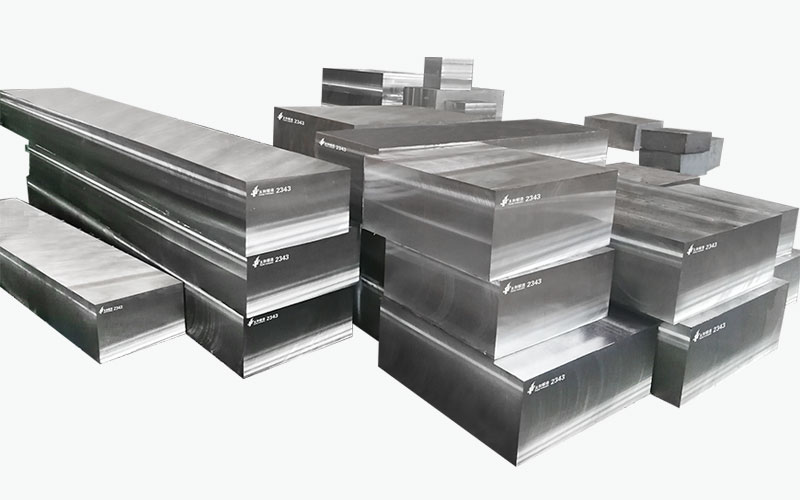
Going deep into the science, steel forging can be classified into two basic types:

CLOSED DIE FORGING
In the closed die technique, the metal is pressed between two dies that comprises of the precut profile of the desired shape.
OPEN DIE FORGING
In open hot forging steel, the metal piece goes through a deformation between multiple dies that do not enclose the material entirely. The dies constantly hammer the metal to achieve the desired shape.
The bonus of forged steel is that the metal becomes stronger than equivalent types that are cast or machined. Steel forging is commonly used in mechanical and industrial applications due to its strength, availability, and specialized alloy types like stainless steel and carbon steel. Forging in steel offers unsurpassed resilience for manufacturing parts that simply do not fail. The various benefits of forging are:
Steel forge parts offer a higher degree of reliability and tolerance capabilities
Steel forgings offer uniformity of composition and structure. They have minimum variation in machinability and mechanical properties
Forged steel parts are stronger and more reliable than machined or cast parts
Steel forgings make possible designs that accommodate high loads and stresses
Steel forgings are used when quality cannot be questioned
Steel forge parts are free from gas voids, pockets, or cooling defects which can lead to load failure
There are the following 5 types of common plastic mold steel:
1.Corrosion-resistant type
Uses: mainly used in the production of materials such as polyvinyl chloride, polystyrene, ABS plus flame-retardant resin, which will decompose corrosive gases.
Grades: Typical grades of corrosion-resistant plastic steels commonly used abroad are martensitic stainless steel and precipitation hardening stainless steel, such as STSAX (4Cr13) and ASSAB~8407 of ASSAB company in Sweden. Common domestic are high-carbon high-chromium corrosion-resistant steels such as 1Cr17Ni2 martensitic stainless acid-resistant steel, 0Cr16Ni4Cu3Nb precipitation hardening stainless steel, etc.
2.Tempering type
The quenched and tempered type refers to the quenching and tempering process after the mold is processed to make the mold performance better. There are three main categories:
Carbon steels such as 45 and 55
Uses: Suitable for molds with simple shapes or low precision requirements and short service life.
40CrMo, 42CrMo.
Uses: the former has good low-temperature impact toughness and low notch sensitivity, suitable for making medium-sized molds; the latter belongs to high-strength steel, and has a high fatigue limit, good low-temperature impact resistance, suitable for manufacturing large size requiring certain strength and toughness , Medium-sized plastic mold.
38CrMoAl, 5CrNiMo.
Uses: The former is suitable for plastic molds of PVC and PC. The latter is mainly used for molds with high temperature and high wear resistance requirements, such as thermosetting plastic molds.
3. Age hardening type
Uses: Age hardening type is mainly used to manufacture high-precision, complex cavity plastic molds, which is expensive. There are two categories of maraging steel and precipitation hardening steel.
Grades: Typical grades are newly developed low-cobalt, cobalt-free, low-nickel maraging steel and MAST maraging steel.
Among them, the low-cobalt, non-cobalt, low nickel maraging steel, the hardness of the tempered steel is about 30HRC, and the hardness after aging treatment can reach 38-42HRC. MAST maraging steel has a hardness of 28-32HRC after solid solution and 48-52HRC after aging. The steel has high toughness, small changes in aging size, and good welding performance.
4. Carburizing type
Uses: Carburized steel has low hardness and good plasticity after annealing, and can be formed by cold extrusion.
Grades: Typical grades are 8416 in Sweden and P2 and P4 in the United States.
Chemical composition: The carburized plastic mold steel has a low carbon content, and the element Cr is often added. At the same time, appropriate amounts of Ni, Mo, V are added to improve the hardenability and carburizing ability. After annealing, the response should be ≤100HBS.
5. Pre-hard type
Uses: The pre-hardened type is a mold steel developed to avoid deformation of large and medium-sized precision molds after heat treatment and to ensure the accuracy and performance of the molds.
Brand: The pre-hardened plastic mold steels listed in the national standard are only 3Cr2Mo (P20) steel and 3Cr2MnNiMo.
Chemical composition: It is pre-conditioned and has a hardness of 30-40HRC. This type of steel is generally low-carbon alloy steel with a carbon content of 0.35%-0.65%. Commonly used alloy elements are Cr, Ni, Mn, V, etc. To improve its machinability, S, Ca, etc. are added.
Megosztás a facebookon